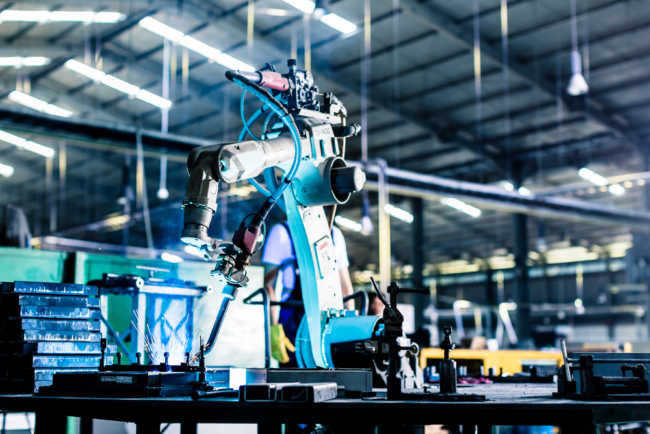The Ultimate Guide to Smart Manufacturing
Cisco Live just wrapped last week, and we had a lot of great conversations with customers who are looking to evolve their manufacturing operations and achieve an “ultimate state.” Many of these conversations revolved around how to improve their factory network and reduce downtime, taking advantage of wireless in a plant and becoming more secure, and how can IT and OT collaborate better together. For the first time, we have captured all these topics in one place, and we call it the Ultimate Guide to Manufacturing. What does an Ultimate Guide to Manufacturing deliver? More than you expect – here’s why.
Manufacturing’s goal is always to continuously approve with an aim towards reaching an “ultimate state.” These goals include:
- Ultimate overall equipment effectiveness (OEE)
- Ultimate productivity
- Ultimate efficiency
- Ultimate visibility
- Ultimate use of resources
The path to achieving these goals has changed over time from the industrial revolution where new machinery helped drive productivity ultimately leading to mass production of products and the integration of automation and computers to drive efficiency, visibility for manufacturing and optimize process and resources as a means of competitive advantage for companies.
Manufacturing has now entered what many describe as Industry 4.0 and is characterized by the combination of cyber-physical technologies through connectivity, data collection and management and distributed computation. Industry 4.0 is the ultimate vision of that state for manufacturers, and we see three foundations that manufacturers must develop to make their factories “smart”:
- Hyperawareness– An organizational capability to recognize real-time insights and future trends. A critical component of hyperawareness is the ability to see first-hand how products and services are used in practice.
- Informed decision making– The capability to actively analyze information that arrives through hyperawareness and to ensure that it reaches those who need it most.
- Fast execution– Informed decisions must be turned into action (predictive maintenance when a plant-floor machine shows early signs of fatigue, for example) 1
Manufacturers will succeed when they’re connected, agile, and secure. Technology is leading the way for the industry, and over the past year, we have discussed many areas and applications that are helping drive these capabilities within smart manufacturing. We’ve explored these topics through a series of white papers focused on:
- Industrial security
- IT/OT convergence
- Wireless technology
- Collaboration
- Data management
To help manufacturers build a strong foundation to Industry 4.0 we are happy to deliver the Ultimate Guide to Smart Manufacturing, which explores upon all the topics mentioned above in a new combined E-book. The guide will help companies understand what are the right technology investments to achieve their goals and drive transformation without being disrupted by current risks to their business. See some smart factory case studies here.
Some examples of topics explored in the guide include:
- Four ways to maximize security in a smart manufacturing environment
- Enabling real-time decision making through fog computing
- The top 4 misconceptions about industrial wireless
- Leveraging Collaboration technology for remote maintenance
- Avoiding the pitfalls of Data Management
The guide is a helpful for both those just starting their smart manufacturing journey and for those who already have a head start in Industry 4.0. I invite you to download it here.
For more on digital manufacturing, explore our manufacturing site.
 This article was written by Eric Ehlers, Marketing Manager at Cisco. Eric joined Cisco in 2016, taking responsibility for marketing in the manufacturing vertical. He was previously Director of Marketing at Belden, where he worked with the Industrial Networking and Connectivity, Enterprise Connectivity and Cybersecurity business units. Originally the article was published here.
This article was written by Eric Ehlers, Marketing Manager at Cisco. Eric joined Cisco in 2016, taking responsibility for marketing in the manufacturing vertical. He was previously Director of Marketing at Belden, where he worked with the Industrial Networking and Connectivity, Enterprise Connectivity and Cybersecurity business units. Originally the article was published here.




